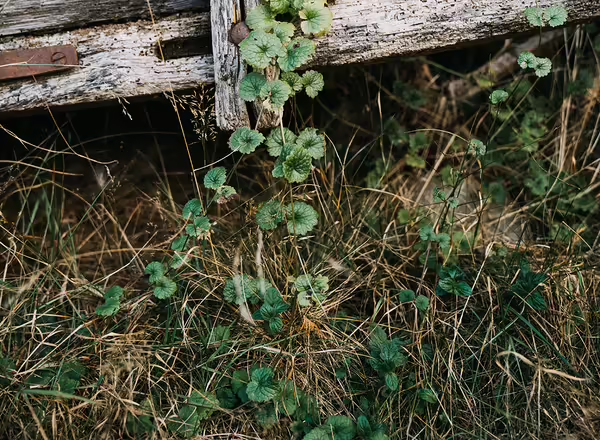
Managing Creeping Charlie in Lawns
How to rid yourself of creeping Charlie in your lawn
Ground ivy (Glechoma hederaceae), also called creeping Charlie, is a common lawn weed problem. Shady lawns with poorly drained fertile soil are typical sites for ground ivy to develop into a major problem. This plant may form extensive patches as it creeps along the soil and moves into sunny areas. The stems are square and the leaves are arranged opposite of each other along stems. The leaves are round to somewhat kidney shaped with rounded, toothed margins. Crushed leaves have a minty odor. Ground ivy has small funnel-shaped purplish-blue flowers appearing from April to June.
To keep ground ivy from invading lawns, maintain a thick lawn by using proper lawn care practices. (Mow high, mow often, and keep your blades sharp just to name a few.)
Unfortunately, grasses in shade areas are not as competitive against weeds as those in full sun. See Managing Lawns in Shade Areas on this website. In some shade situations, the ground ivy may function quite well as a groundcover and be desirable.

One control option is to dig out existing ground ivy. Pull up all the roots and stems or the plant will grow back. This option works well if ground ivy has gotten a foot hold in a flower or shrub bed, and you can prevent the spread into the lawn. If you are starting a lawn using organics, it is important to rid the lawn area of creeping Charlie before you establish the lawn.
Although control is difficult, existing ground ivy can be treated with postemergence broadleaf herbicides in the period from mid-spring to early summer and/or mid to late fall. Regardless of the time, make sure the weeds are actively growing.
The most effective chemical option are three-way broadleaf herbicide combinations (one product containing three herbicides) that may include 2,4-D (2,4-dichlorophenoxyacetic acid); mecoprop or MCPP (2-(2-methyl-4-chlorophenoxy) propionic acid); and dicamba (3,6-dichloro-o-anisic acid). Several different combinations of these three-way herbicides are available and often labeled for weed control in lawns.
According to University of Illinois weed scientist Michelle Wiesbrook, in cool-season grasses, research has shown that the best results were with the active ingredients, fluroxypyr and triclopyr. Both work well as standalone products and may indeed work better than when as part of a two-, three-, or four-way product because the percentage of these ingredients is higher. Combination products of these two alone should be effective as well. Applications should be made at bloom time or just after. For best results, a second application should be applied 3 to 4 weeks later. For complete control, 1 or 2 fall applications will likely be needed. Ground ivy is persistent! These products can provide injury to sensitive plants. When using any pesticide, be sure to carefully read and follow all label directions. In turfgrass, preemergence products provide little control for this perennial weed. Homemade mixtures containing boron (Borax) are NOT recommended as results are inconsistent and long-term damage can result to the soil. Read Michelle’s full article.